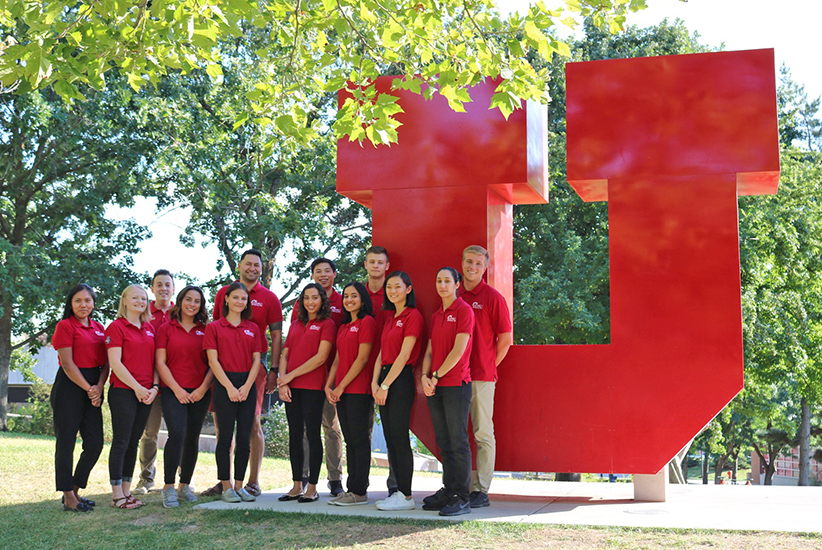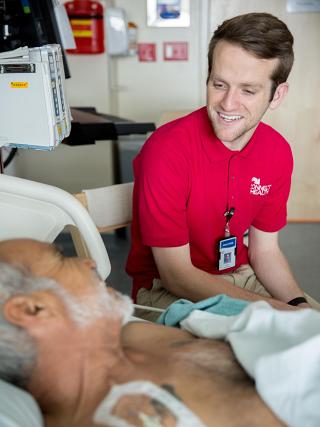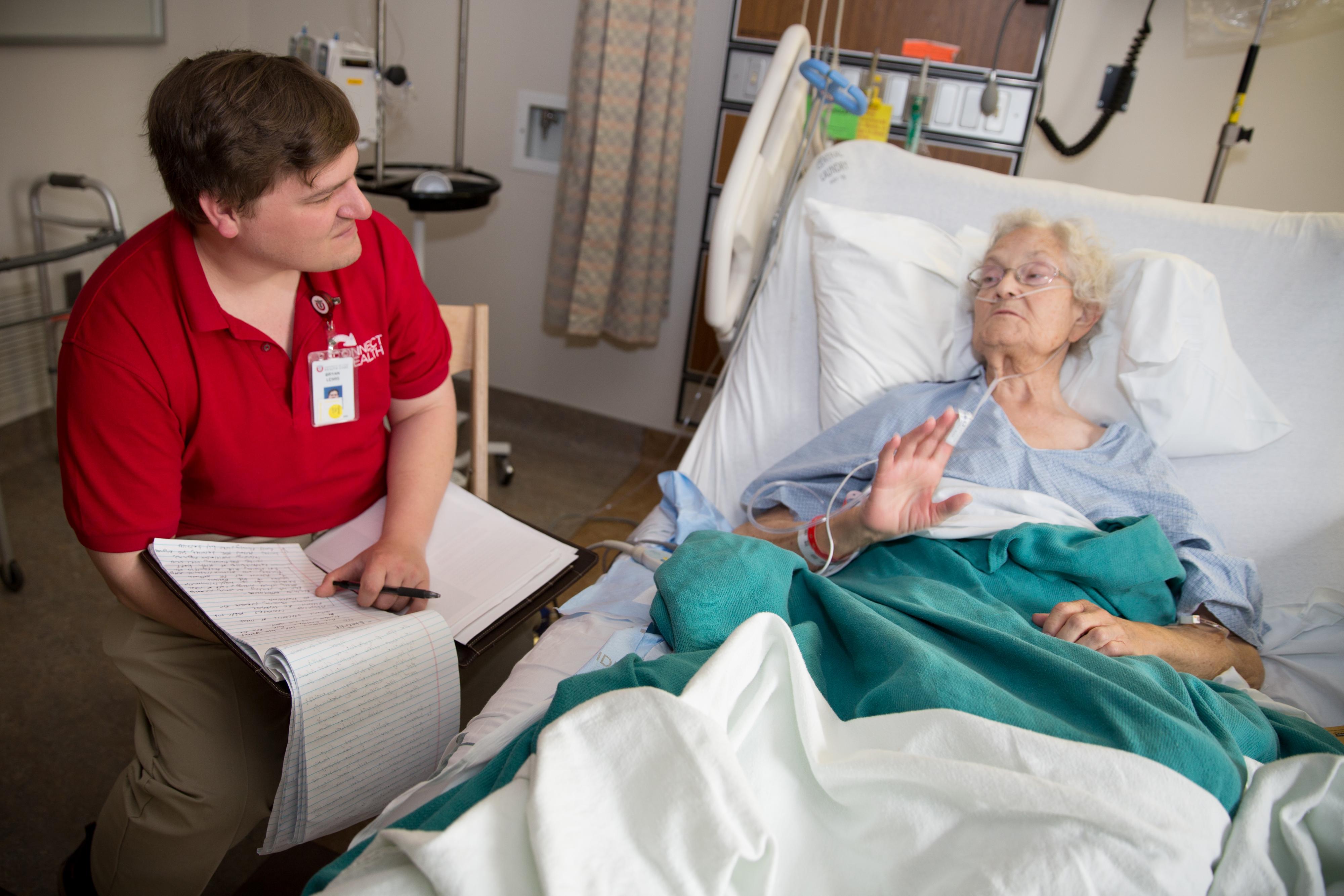
Connect2Health Bridges the Gap Between Patients and Resources
Studies show that health care delivery is responsible for only a quarter of health outcomes. The remaining three-quarters are driven by social determinants of health: economic and social conditions like racism, income, environment, employment, transportation, and food security that influence health and well-being.
A recent survey of 210 U of U Health Emergency Department patients found that 61 percent had one or more unmet needs like a lack of money for food, clothing, or health care. Clinicians may not have time to address those needs. That’s where students from U of U Health’s five colleges and schools come in.
Nearly 50 of them comprise Connect2Health, a volunteer group founded in 2012 by students to bridge the gap separating patients in need from available community resources. Although they aren’t yet licensed to care for patients, Connect2Health director Danielle Holliday says these students can still make a difference. Most importantly, they have the time to do it.
“Connect2Health volunteers want to have a positive impact on the community,” says Holliday, who started as a volunteer herself. “Our partners at Fourth Street Clinic, South Jordan Health Center, University Hospital, and the Wellness Bus trust us to work with their patients. It’s a really great privilege.”
At Fourth Street Clinic, which delivers care to individuals experiencing homelessness, Connect2Health volunteers serve as the nonprofit’s “boots on the ground,” according to Laurel Ingham, the clinic’s development director. “When patients walk through the door, they see the [volunteers] in their red shirts. They start conversations of engagement: ‘What else do you need besides health care? Housing? Clothing?’ They have time to talk about resources that are not going to be talked about at their appointment. That reduces barriers and improves care. It’s a win-win for everyone.”
Some patients have needs that extend far beyond what clinical care and the community has resources to give. What’s often missing is the connection. Connect2Health student volunteers like Jordan Marsh (right) help bring the two together. “Many times, just having someone to communicate with gives a patient hope,” says Danielle Holliday, director of the student-led volunteer organization.
Thanks to their relationships with an astounding 1,400 nonprofit organizations across Utah, Connect2Health volunteers can point the right patient to the right resource. But at nine Salt Lake Valley locations where they work, they also perform a necessary human function. “Many times, just having someone to communicate with gives a patient hope,” Holliday says. “We try to empower patients to understand their personal value. Hopefully these kinds of interactions encourage them to find the help they need.”
Some patients have needs that extend far beyond what clinical care and the community has resources to give. What’s often missing is the connection. Connect2Health student volunteers like Jordan Marsh (above) help bring the two together. “Many times, just having someone to communicate with gives a patient hope,” says Danielle Holliday, director of the student-led volunteer organization.
Anne Thackeray, MD, PhD, serves as Connect2Health’s faculty advisor, while Holliday, Rebeca Cannaday, and Amber Wolff direct operations. Pre-COVID-19, the organization also delivered resources at events like Junior League of SLC’s CARE Fair, Project Homeless Connect SLC, and Horizonte Instruction & Training Center’s Connect2Health Annual Resource Fair. Student volunteers also work closely with Crossroads Urban Center, one of the busiest emergency food pantries in Utah. From 2017-2019, U of U Health students volunteered 21,518 hours at nine Salt Lake Valley locations.
“We want to continue to expand our reach,” Holliday says. “How we do this is as varied as the clinics and doctors need us to be.”


